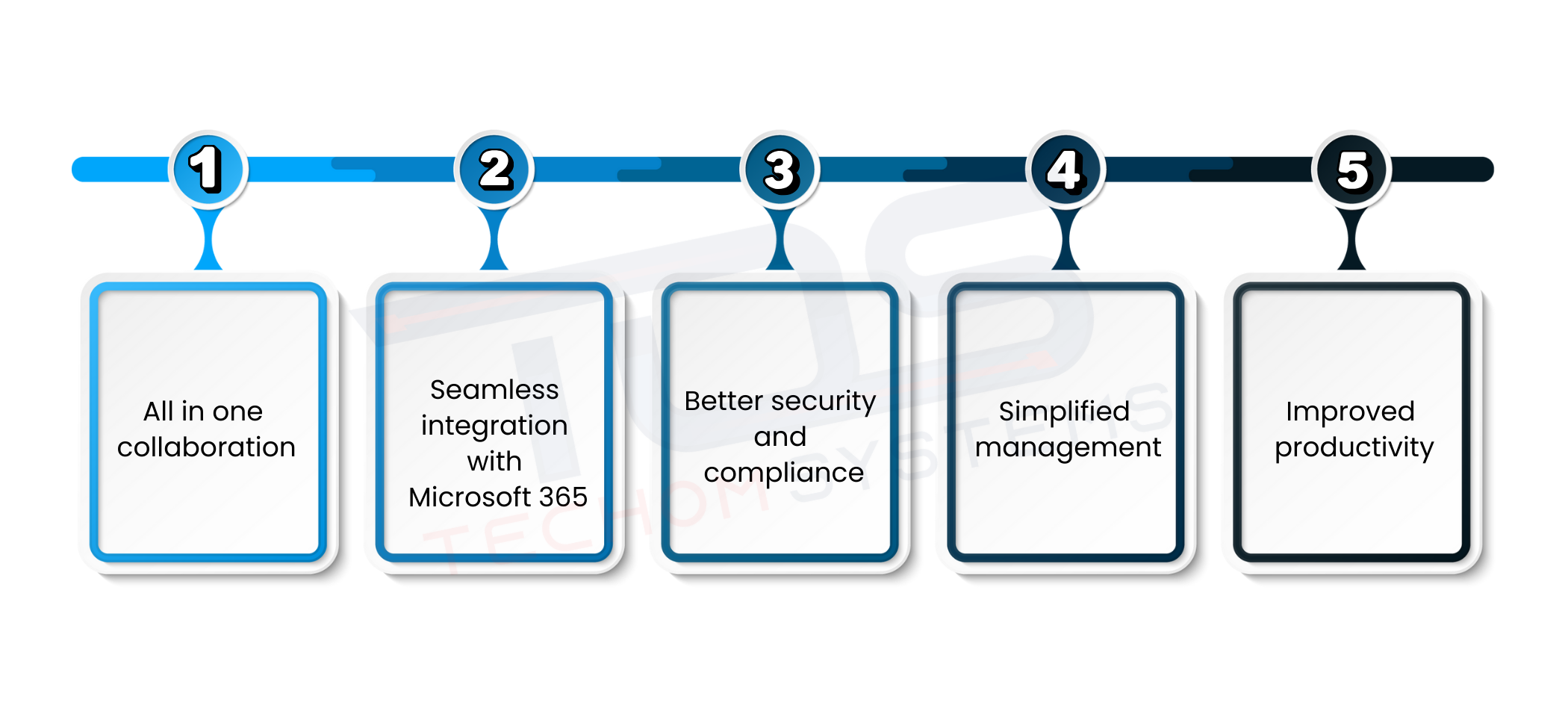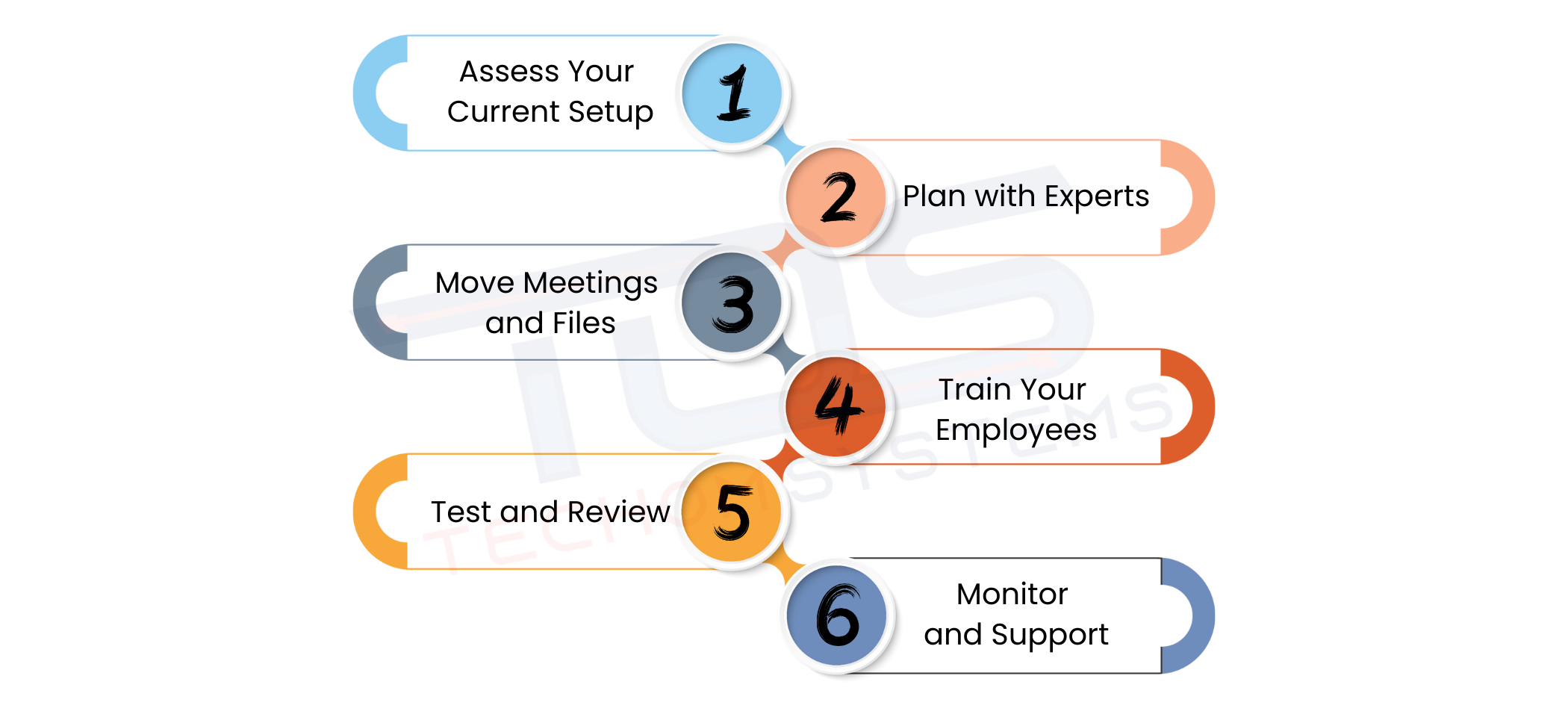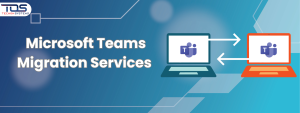Are you facing challenges in managing meetings, chats and file sharing across different platforms? Many businesses struggle with using multiple tools for meetings, chat and file sharing. Zoom works well for video calls but it often leaves teams switching between different apps for documents, tasks and collaboration. Imagine a growing company where employees attend client meetings on Zoom, manage files in shared drives and communicate in separate chat apps.
This scattered workflow slows down projects and creates confusion. Microsoft Teams solves this problem by bringing chat, meetings, file sharing and Office 365 integration into a single platform. If you plan to migrate from Zoom to Teams you need a structured process that prevents data loss and reduces downtime. TECHOM Systems is here to guide you step by step so your transition feels easy and natural.
If you don’t want to confused and make your journey smooth you can book a free consultation with TECHOM Systems today and start making your work life easier. Click the button below to get started.
Why Businesses Are Moving From Zoom To Teams?

Many companies started using Zoom because it was simple for video meetings. Over time they realized that managing meetings, chats and files across different platforms creates confusion. Teams often end up wasting time switching between apps instead of focusing on work. This is one of the main reasons businesses now look to migrate from Zoom to Teams. Here are some key reasons behind this shift:
- All in one collaboration: Microsoft Teams combines chat, video calls, file sharing and task management in one place which makes teamwork more productive.
- Seamless integration with Microsoft 365: Businesses already using Outlook, SharePoint and Office apps find the transition from Zoom to Teams much smoother.
- Better security and compliance: Teams provide advanced security and compliance features that many companies need for safe communication.
- Simplified management: IT teams find it easier to manage users, permissions and tools within Teams compared to handling multiple separate apps.
- Improved productivity: With fewer platforms to juggle employees can work faster and collaborate more effectively.
The move from Zoom to Teams is not just about changing tools but about upgrading how teams work together.
Zoom vs Microsoft Teams: A Quick Comparison
Before diving into the migration process, it helps to understand why so many businesses are making the switch. While Zoom is widely known for video meetings, Microsoft Teams offers a complete collaboration hub that brings chat, file sharing and Office 365 apps into one platform. The table below highlights the key differences that show why Teams is often the better long-term solution:
| Feature | Zoom | Microsoft Teams |
| Video Meetings | ✅ Strong | ✅ Strong |
| Chat & Collaboration | ❌ Limited | ✅ Built-in |
| File Sharing | ❌ External apps needed | ✅ Integrated with OneDrive/SharePoint |
| Task Management | ❌ Not available | ✅ Built-in Planner & Tasks |
| Security & Compliance | Basic | ✅ Advanced (enterprise-level) |
| Microsoft 365 Integration | ❌ No | ✅ Seamless |
Looking at this comparison, it becomes clear why so many businesses are choosing Microsoft Teams over Zoom. The table highlights how Teams combines meetings, chat, file sharing, and task management all in one platform, making collaboration smoother, more secure, and more productive. With Teams, your team spends less time switching between apps and more time getting work done efficiently.
How To Migrate From Zoom To Teams?

Many business leaders ask how to migrate from Zoom to Teams without disrupting daily operations. If you rush the process, you risk losing valuable data, creating downtime and leaving employees frustrated. The best approach is to follow a structured roadmap where each step is clear, simple and carefully planned. By doing this you can make the transition smoother and build confidence among your team. Below are the key steps to migrate from zoom to teams:
Step 1: Assess Your Current Setup
Every migration starts with a proper assessment. Without understanding what your company is currently using in Zoom, you may end up transferring unnecessary data or missing important information. To make this step effective you should:
- Review scheduled meetings and recurring sessions that employees rely on so nothing gets missed.
- Identify which recordings are valuable for training or compliance and remove the ones that no longer matter.
- Collect contact lists and chat history used for collaboration so conversations remain accessible.
- Separate critical business files from outdated or unused data to keep the migration clean.
Once this foundation is clear planning becomes much easier.
Step 2: Plan with Experts
Planning is often the difference between a smooth migration and a chaotic one. Many companies choose Microsoft Teams consulting services at this stage because experts know the common pitfalls and how to avoid them. A good plan should include:
- Building a migration roadmap that defines timelines and milestones for the entire project.
- Defining security and compliance needs to match your industry standards.
- Assigning roles to IT teams and project owners so everyone knows their part.
- Planning how existing workflows will shift into Microsoft Teams to reduce disruption.
With a solid plan in place you are ready to move your meetings and files.
Step 3: Move Meetings and Files
This is the stage where the actual transition happens. Data must be moved carefully because employees need immediate access to continue their work. To make this process smoother you should:
- Transfer scheduled and recurring meetings into Microsoft Teams so employees stay on track.
- Move recordings and training sessions to preserve important knowledge.
- Map permissions correctly so files remain secure yet accessible.
- Ensure chat history and shared folders migrate without errors.
After data transfer the next step is preparing employees to work confidently in Teams.
Step 4: Train Your Employees
Even the best technical migration will fail if employees do not know how to use Microsoft Teams. Training is the key to adoption. To build confidence across the organization you can:
- Run short workshops to show how to chat, call and share files inside Teams.
- Provide easy to follow guides and resources for quick learning.
- Highlight productivity features like task management and file collaboration.
- Encourage employees to ask questions and experiment with the platform.
Once employees are trained the next step is to test everything before rolling out fully.
Step 5: Test and Review
Testing ensures that all features and workflows function as expected before launch. To avoid risks you should:
- Check if meeting links redirect correctly inside Teams.
- Verify that migrated files and recordings are accessible.
- Review chat history and permissions to confirm accuracy.
- Run pilot projects with a small group to gather feedback.
After a successful test phase you are ready to scale up and provide ongoing support.
Step 6: Monitor and Support
Migration is not finished once Teams goes live. Long term success depends on monitoring and support. For this step you should:
- Track usage patterns to see which features are used most.
- Provide a help desk or support channel for employees.
- Collect feedback to improve workflows continuously.
- Update training resources as new features are released.
With continuous support your migration from Zoom to Teams becomes a long term productivity upgrade.
Switching from Zoom to Teams can be tricky. You might lose stuff or face delays if you try it alone. Don’t worry, we can handle it for you and make everything simple. Book a free consultation with TECHOM Systems today and move without any stress.
Common Challenges in Zoom to Teams Migration
When businesses plan to migrate from Zoom to Teams, they often face unexpected challenges. Understanding these hurdles ahead of time helps you prepare better and ensures the move is smooth, secure and productive. Below are the most common challenges companies encounter during the transition from Zoom to Teams:
1. Data Transfer Problems
One of the biggest difficulties in migrating from Zoom to Teams is transferring files, recordings and chat history accurately. Without careful planning, you might end up losing important information or experiencing errors that disrupt work. Here is what can happen if data transfer is not handled properly:
- Large meeting recordings may take time to move or could get corrupted if not handled correctly
- Chat history from multiple teams or departments may not appear properly in Teams
- Shared files might lose permissions or version history
By planning the data transfer properly and using Microsoft Teams migration services, you can ensure all your valuable content is safely moved and ready for use in the new platform.
2. User Adoption
Even if the migration itself goes perfectly, the real challenge is getting employees to use Microsoft Teams confidently. People often resist change and some may struggle with the new tools and workflows. Common adoption issues include:
- Employees may find it confusing to switch from Zoom meetings to Teams calls
- Some staff might continue using old tools instead of Teams unless guided
- Productivity can temporarily dip as employees learn the new interface
Using Microsoft Teams consulting services to provide training, workshops and step by step guides helps employees adjust faster and embrace the new platform.
3. Security and Compliance
Protecting sensitive data during migration is critical, especially for businesses in regulated industries. Any mistake in the process could expose confidential information or create compliance issues. Key security considerations include:
- Meeting recordings, chat logs and shared files must be transferred securely
- Proper permissions and access controls need to be maintained
- Compliance policies should be mapped and followed throughout the migration
With professional support, these risks can be minimized, giving your team peace of mind while moving from Zoom to Teams.
Professional guidance ensures that these common challenges do not become roadblocks. By combining careful planning, expert migration services and employee training, your transition from Zoom to Teams becomes smooth, secure and highly effective.
Choose TECHOM Systems For Microsoft Teams Migration
Migrating to Microsoft Teams can be complex, especially when your business relies on multiple communication tools and collaboration platforms. TECHOM Systems make the process simple, safe and efficient. Here are why organizations choose us for their Microsoft Teams migration:
1. Expert Microsoft Teams Define and Design
We start by identifying the best solution for your business, including Microsoft Teams Phone System, Operator Connect, Cloud Telephony and Direct Routing. Our consultants work closely with your internal teams to design a solution that is secure, compliant and future proof, making sure your Microsoft Teams setup grows smoothly with your business.
2. Microsoft 365 Collaboration Governance
We help implement clear policies and access controls to secure collaboration. Our support covers Skype for Business to Teams migration and Avaya to Teams migration. Microsoft Teams SBCAAS Service, security configurations and compliance protocols are handled with a localized approach for Australian businesses.
3. Structured Microsoft Teams Deployment
We deploy Microsoft Teams across all platforms, including migrations from Avaya and Cisco, contact center setup and Teams Personal. Integration with Microsoft Teams Phone System provides enterprise grade telephony, allowing your team to communicate efficiently within the familiar Teams interface.
4. Enhanced Collaboration and Communication
We unify communication through cutting edge apps and platforms. This leads to better decision making, faster response times and lower operational costs. Teams can work efficiently without relying on multiple external systems.
5. Organization Transformation Support
We guide clients through strategy, adoption and communication planning. From deployment to changing management, we help create a connected digital workplace with measurable outcomes.
6. Microsoft Teams Rooms Meetings Setup
We configure and deploy modern Microsoft Teams Meeting Rooms that provide consistent in person and remote experiences. From assessment to rollout, your meeting environment is modernized and secured for reliable performance.
7. Trusted Experts for Migration Success
With TECHOM Systems, your business can migrate from Zoom to Teams or any other platform confidently. Our experienced Microsoft Teams consultants ensure minimal downtime and a smooth transition.
Switching to Microsoft Teams doesn’t have to be hard. Let TECHOM Systems do all the stuff for you so your team can start working without headaches. Book a free consultation and make the move easy today.
Frequently Asked Questions
#1: How To Migrate From Zoom To Teams?
Ans: Migrate from Zoom to Teams with TECHOM Systems to transfer meetings, files and chat history safely. Their experts ensure your workflow continues smoothly while your team adopts Microsoft Teams effectively.
#2: Why Is Everyone Moving From Zoom To Teams?
Ans: Businesses are shifting to Teams for integrated chat, meetings, file sharing and Office 365 collaboration. It reduces app switching, improves productivity and provides a secure platform for all team communications.
#3: Did Teams And Zoom Merge?
Ans: No, Teams and Zoom are separate platforms. Each has its own features for meetings and collaboration and they continue to operate independently for different business needs.
#4: Can Zoom Be Integrated Into Teams?
Ans: Yes, Zoom can be integrated into Teams using apps or add ins. This allows scheduling, joining and managing Zoom meetings directly within the Teams interface without switching apps.
Conclusion
In this blog we discussed why businesses are moving from Zoom to Teams and the common challenges that can occur during migration. You learned a clear step by step approach to migrate from Zoom to Teams, including assessing your current setup, planning with experts, moving meetings and files, training employees, testing and providing ongoing support.
By following these steps and leveraging TECHOM Systems expertise, you can make your transition smooth, avoid downtime and ensure your team adopts Microsoft Teams confidently. The key takeaway is that a structured migration plan, combined with professional support, helps your business unlock the full potential of Teams for better collaboration and productivity.
Feeling overwhelmed about migrating from Zoom to Teams on your own? Contact TECHOM Systems today and let our experts handle everything for you. Make your move simple, safe and stress free.






